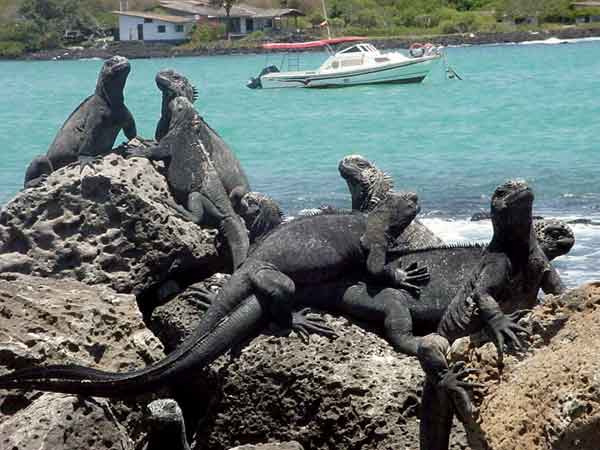Galapagos hawk
As the only diurnal raptor to inhabit the islands, the Galapagos hawk is hard to miss. Though it mostly preys on small animals such as locusts, centipedes and lizards, this raptor is a top predator and has been known to swoop down on iguanas https://galapagosy.com/galapagos-news/marine-iguana/ and giant tortoise hatchlings.
You can spot them during your Galapagos islands Ecuador vacation. Ask us for cruises to Galapagos islands Ecuador.
Description
Galapagos hawk up to 56 cm long and weighing from 650 to 850 g. Sexual dimorphism is not expressed. Plumage is dark brown, tail with gray stripes. The female is slightly larger than the male.
Studies of the mitochondrial DNA of the Galapagos hawk and its closest relative, the Buteo swainsoni, showed that the ancestors of the Galapagos hawk populated the islands about 300,000 years ago. At the same time, they are recent immigrants of the islands, compared with Darwin finches, whose ancestors arrived on the islands about 2-3 million years ago [4]. There is also evidence that the Galapagos hawk are already at the beginning of the division into several species.
Spread & Lifestyle
The Galapagos hawk lives exclusively on the Galapagos Islands. Its habitat covers the territory from rainforests to steppes and mountains.
The Galapagos hawk nests on trees, often reusing the same nest. Each nesting nest increases in size over the years. Both male and female feed their chicks.
A female mates on average with two (one to eight) males. Moreover, there are absolutely monogamous populations, as well as populations where all females have several males. Males are often not closely related to each other and all are involved in feeding the chicks.
Both male and female incubate up to 3 eggs. After the birth of the chicks, only the male hunts, while the female remains and feeds their prey, later both parents hunt and feed the brood. More often, only one chick survives, which at the age of two months becomes independent. He stays up to 4 months with his parents until they drive him away.
Come to spend your vacations to Galapagos! We’ll help you to choose from the best Galapagos trips.
Video https://www.youtube.com/watch?v=d0Vt_lXp-_E


 Русский
Русский
